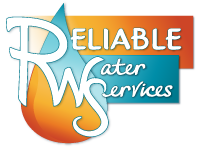In a busy restaurant, efficiency is critical. Diners expect quick, clean, and organized service.
When it gets extra busy, how do you ensure that traffic continues to flow, orders are accurate, and your restaurant is turning over patrons quickly while still meeting their needs effectively? How do you deliver an excellent dining experience?
Improving restaurant operations has many benefits, including ensuring your staff is happy, reducing waste, pleasing customers, and increasing profits. Here are nine ways to provide better service and improve restaurant efficiency simultaneously.
1. Embrace Technology
 An integrated Point-of-Sale (POS) system is one of the most critical elements to keep your restaurant running smoothly, and various models are available. Combining your payment and inventory systems provides enormous data while virtually eliminating human input error.
An integrated Point-of-Sale (POS) system is one of the most critical elements to keep your restaurant running smoothly, and various models are available. Combining your payment and inventory systems provides enormous data while virtually eliminating human input error.
Good restaurant POS system features include:
- Make ordering fast and easy.
- Send orders to multiple kitchen stations for preparation.
- Store recipes for consistent meals.
- Generate detailed receipts with guest names and loyalty program status.
- Track inventory items for accurate ordering.
- Generate detailed sales and inventory reports.
- Track customer behavior, order history, and other personal details to create a personalized experience.
- Schedule the correct number of people for each shift.
A fully-featured POS automates a lot of time-consuming tasks, leaving your staff free to do more important work. Ultimately, it is not a stretch to say that your restaurant’s success may depend on the software you choose.
2. Invest in Training
No matter how excellent your POS management software is, it can’t be efficient unless everyone on staff knows how to use it properly. Well-trained employees will make fewer mistakes – and that improves restaurant efficiency and makes customers happier.
Your POS can also help you identify your highest-performing employees so you can reward them and figure out which employees are underperforming so you can make adjustments. For example, some may need a smaller workload or additional training to keep up, and some may benefit from extra encouragement.
3. Communicate With Your Staff
 Who knows where your inefficiencies are better than your staff? Your best intel about running a restaurant efficiently comes from enabling open communication among the people who work in your restaurant. Listen to their suggestions and act on them – or explain why not.
Who knows where your inefficiencies are better than your staff? Your best intel about running a restaurant efficiently comes from enabling open communication among the people who work in your restaurant. Listen to their suggestions and act on them – or explain why not.
Hold regular staff meetings to keep everyone in the loop on changes, news, and issues. Knowing what’s going on and what’s on the horizon builds trust and inspires confidence. Meetings also offer the opportunity to ask for input, discuss ways to improve success, and acknowledge good ideas.
4. Keep Your Staff Happy
Open communication is just the start of employee retention, and a happy, healthy staff is crucial to daily restaurant operations. Help your team members make money and find a good work/life balance to keep stress low and satisfaction high. Your best employees will build a following of loyal customers. It’s worth it to nurture talent in the restaurant kitchen and the front of the house.
5. Hire Great Talent
There’s no polite way to say this: bad employees are bad for business. Invest the time and effort into finding employees with the experience you need who will be a good fit for your team. Use a standardized approach to hiring and training, and promote from within.
Once hired and trained, give them opportunities to try different positions and ongoing training.
Watch for red flags on the team. One consistently lousy attitude can bring down the whole staff and affect the overall quality of your service. If a worker isn’t happy in their job and that isn’t likely to change, invite them to find a new one. On the other hand, if everyone is unhappy and turnover is high, it’s the job, and it’s time to find out why.
6. Make Responsibilities Crystal Clear
Each team member needs to receive well-defined tasks, including expectations, how the job should be undertaken, and when it needs to be completed. Every task is important. For example, if silverware needs to be rolled before the dinner shift, is it the responsibility of the incoming servers, or should it be done by lunch servers at the end of their shift?
Making a detailed operations plan to designate who does what and when ensures that everything gets done or someone is accountable.
7. Create a Strategic Floor Layout
 The table arrangement in the dining area makes a significant difference in operational efficiency. Your floor plan should allow easy maneuvering between and around tables, with extra room allotted in high-traffic areas around the kitchen and bar. If possible, sections should be assigned so that servers are separated, not bumping into each other. One server in a small area with four to six tables also makes the server more visible and available to diners, and that grants more time to ensure their needs are met and to upsell desserts and drinks.
The table arrangement in the dining area makes a significant difference in operational efficiency. Your floor plan should allow easy maneuvering between and around tables, with extra room allotted in high-traffic areas around the kitchen and bar. If possible, sections should be assigned so that servers are separated, not bumping into each other. One server in a small area with four to six tables also makes the server more visible and available to diners, and that grants more time to ensure their needs are met and to upsell desserts and drinks.
8. Organize the Kitchen
In any restaurant kitchen, organization is paramount to efficiency. Stations should be uncluttered, with necessary tools in easy reach. To avoid cross-contamination, each worker needs their station for prep or cooking and should be responsible for keeping their area clean. Train your employees to clean up as they work to avoid clutter, contamination, and accidents.
9. Take a Deep Data Dive
Dig deep into your data for insights. Your POS gives you a wealth of inventory data and ways to structure reports. You should be able to pinpoint how much product to make on specific days and prep menu items more efficiently so you don’t run out – or have to throw out extra food. Get creative. Find out if you sell more soup on rainy or cold days or whether people order more tacos on Tuesdays. Sales data may surprise you (and help you lower food costs).
Efficient food prep is the key to speed in any successful kitchen, and data gives you concrete insight into how much to prepare on what days. So naturally, you’ll want to make more of what you run out of and less of what you toss at the end of the day.
When running reports, be sure to single out data for different events happening nearby. Restaurants often benefit from concerts, sports, or other events that draw a crowd to a nearby venue. If you pull data from specific event days, for example, all days in fall/winter with an NFL game at a nearby stadium, you’ll be able to see how it affects your walk-in traffic, what customers order, and when your restaurant is busiest.
Maximizing your restaurant’s assets can ensure you offer the best dining experience. There are a plethora of opportunities to make your business run more smoothly. From implementing state-of-the-art technology to investing in your employees, you can improve restaurant efficiency with minor inconvenience to you, your staff, or your customers.

